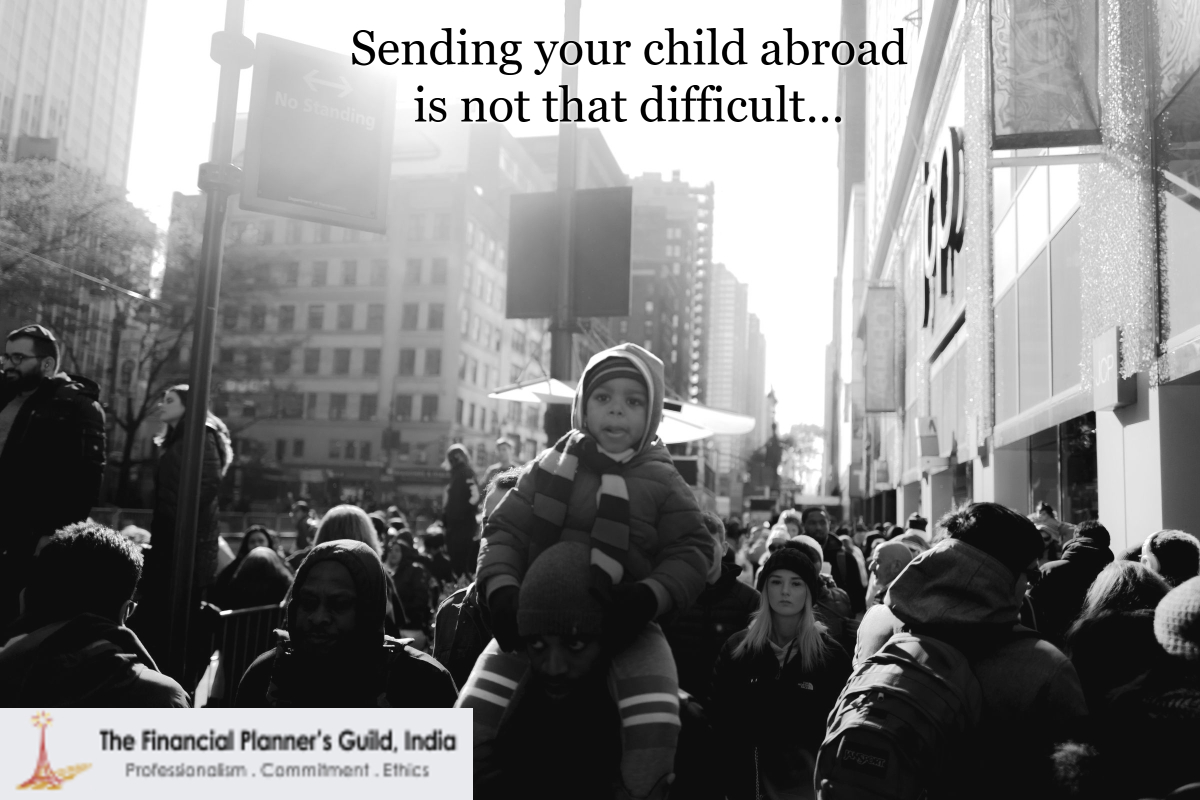
She was born a year ago. You named her Pari. And she turned out to be just that. She filled your home with happiness and laughter and lit up your life. Life is great now. You want to do your best for the apple of your eye. But, the education cost is worrying you… especially since all your friends are making plans to send their sons and daughters abroad, for higher education.
Education as such, is costly today… foreign education, more so. But, you need not break into a sweat if you were to break up the problem – it won’t look so daunting. Let us see how.
Firstly, much depends on the choice of country where the education is to be pursued. If it is US or UK, the cost per annum could vary between Rs.20-30 Lakhs. If the education is in Singapore, Russia, China, it would be much less.
Secondly, even if it is in the US, there are ivy league colleges which are sought after. The fees here would be much higher than many other colleges. However, there are many colleges which are in the second/ third rung which would offer good quality education for far less money. The amount one would need to spend in such colleges can come down by almost 25%. That is another option available if one wants to send their children abroad, but want to keep the cost within manageable limits.
Now comes the interesting part. The funding by the parent need not be to the full extent of the course fee & living expenses. The funding abroad has four components. They are – Loan, scholarship, self-funding by the student & your funding.
Loans – Today, loans are available upto Rs.20 Lakhs from banks. They of course ask for collateral, guarantors etc. The student can pay the loan after completing the course and land a job. Hence, this is definitely one source of funding.
Scholarship – Many colleges offer scholarships to international students, depending on the course and the scores obtained in the relevant examination like SAT, GMAT etc. Again, different colleges offer scholarships in specific streams, where they want to attract talent. The scholarship on the tuition fees can be substantial – upto even 50% of the tuition fee. That could ease the burden a lot. Also, once the child starts performing well while in college, the scholarship can continue into the future years of education as well.
Self-funding by the student – Children studying abroad, routinely do part-time jobs to defray their expenses abroad. Teaching assignments, research assistance work, working in restaurants etc. are some of the self-employment options available. This will take care of their living expenses to an extent.
Funding by the parent – Funding by the parent is one source too. It is not the only source as is assumed by many. Parents could look to fund anything from 30-50% of the expenses, which could by itself come to quite a packet. But if one starts off early, reaching a decent corpus should not be a problem. Much depends on whether the entire college education is to be done abroad or only the post- graduation portion. Many students go abroad only for post-graduation. But an increasing number of parents are sending their children abroad even at graduation.
Portfolio to take care of education funding – Putting together a long-term plan is essential. Starting early always helps. For accumulating a good corpus, one could start a PPF account for the child. Another good long-term savings mechanism is by investing monthly in equity oriented assets. Other good instruments available are tax-free bonds. These are available today for 10 & 15 year tenures and offering 8% plus post-tax returns. Some may also want to stick with FDs, for a portion of their investment. This may be a low-risk route but the corpus may not grow as desired. Hence, this portion should be limited to 20-25% of the portfolio.

The other viable options are debt MF schemes which offer good post-tax returns. Debt MF Schemes are subject to special long-term capital gains tax. Long-term capital gains tax for debt funds are 10% without indexation or 20% with indexation, whichever is lower. Based on the current inflation figures, the effective tax would come to just 5-6%.
To hedge the portfolio, one could also go for MF schemes which invest in companies operating globally, to give a currency hedge. This portion of the portfolio can be upto 20% of the portfolio.
A good quality equity portfolio is also another good way to have an asset component which offers good returns over time.
Hence, if one starts doing these things early and invests in a bouquet of products, the goal of sending the child abroad for education can be achieved, without much of a problem. Pari would have no problem going abroad, if her father invests as outlined. Done right, that would be true for every pari in every home.
FPG India ©2024. All Rights Reserved.
Designed & Developed by W3M Technoz